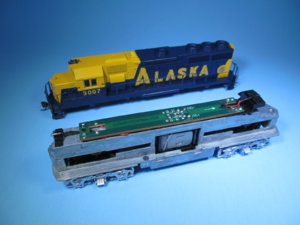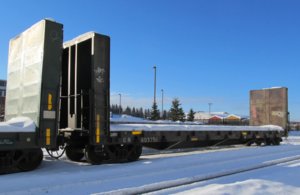McLeod
Forest Lurker
I decided in December, to get my grandkids a train set for Christmas, not knowing diddly about trains or train sets. Little did I know that effort would ignite a desire in myself to pursue the hobby in a far more grand scale. It was probably a mistake to buy one of the train sets with that raised black steel track, but, in my defence, I just didn't know.
Now, I'm wondering about that Bachmann GP40 that was provided in the set I bought. I took the shell off to see what it was all about. Can you tell me if this locomotive is DCC ready by looking at it?

Also, I took a photo of a bulkhead flatcar down at our small, local yard. I'm wondering if anyone knows how long the car is by looking at a photo? I can't see it on the CN roster page.

Because I'm new, and inexperienced, I'll be asking more than a few questions as I go along. I hope you don't mind!
Thanks. Guy
Now, I'm wondering about that Bachmann GP40 that was provided in the set I bought. I took the shell off to see what it was all about. Can you tell me if this locomotive is DCC ready by looking at it?

Also, I took a photo of a bulkhead flatcar down at our small, local yard. I'm wondering if anyone knows how long the car is by looking at a photo? I can't see it on the CN roster page.

Because I'm new, and inexperienced, I'll be asking more than a few questions as I go along. I hope you don't mind!
Thanks. Guy

